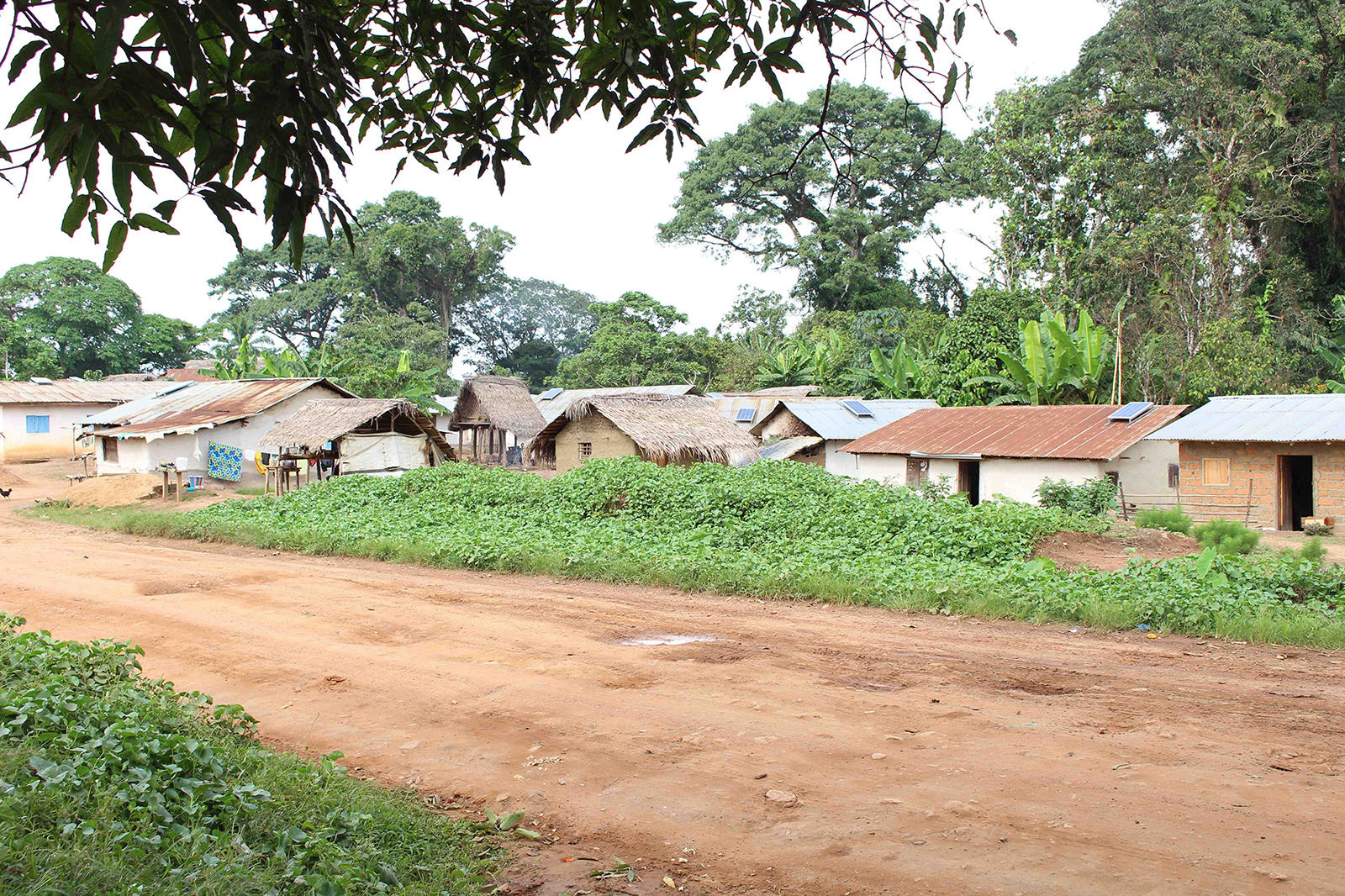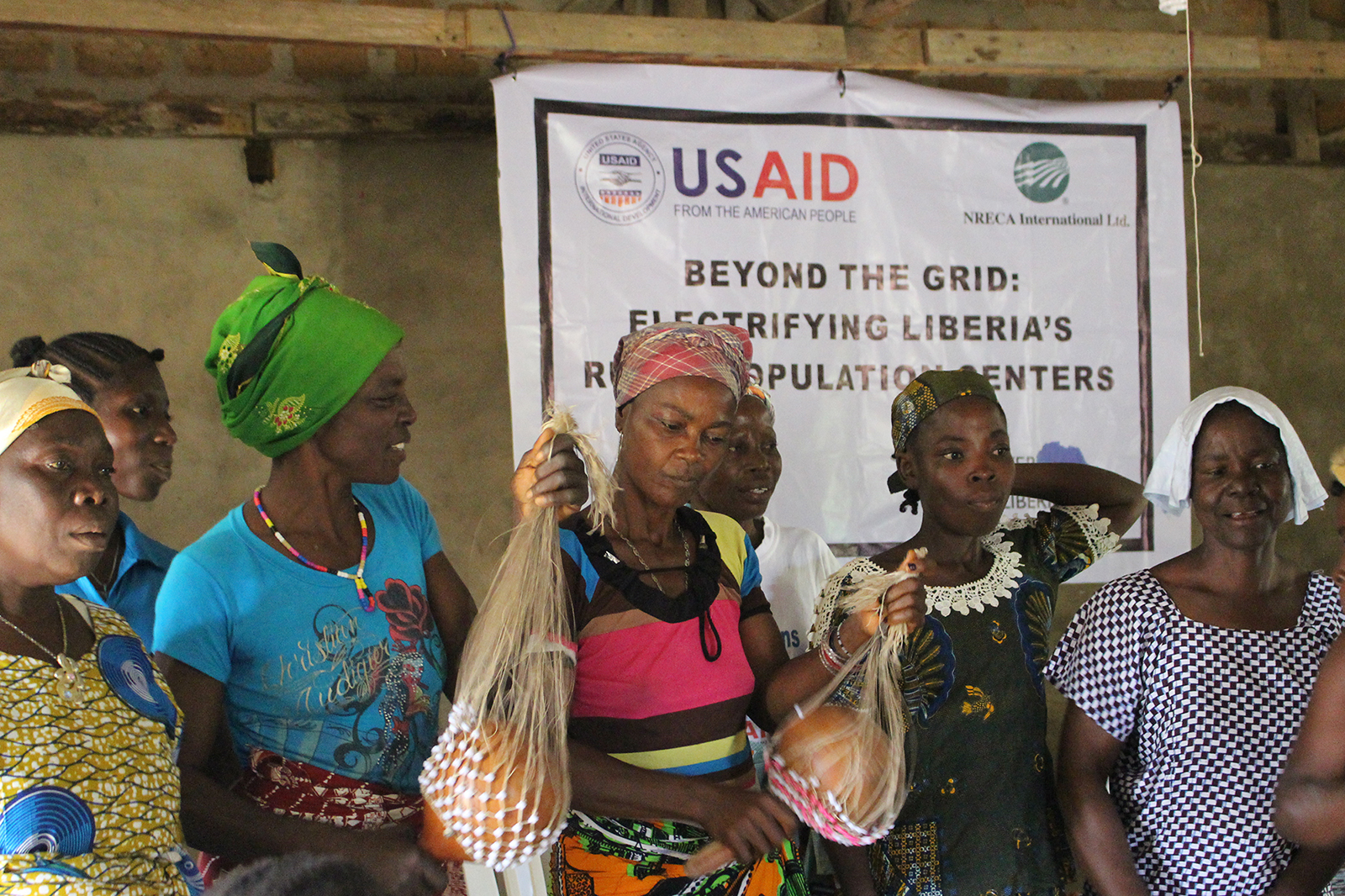
In late 2014, an NRECA International team was finishing preparations for a trip that would begin the process of bringing electricity to rural Liberia. But this wasn’t to be an ordinary electrification project.
Plans formulated by NRECA International, Liberia’s Rural Renewable Energy Agency (RREA), and the U.S. Agency for International Development (USAID) envision a nationwide effort to electrify the country’s rural areas using primarily off-grid renewable resources.
“RREA is not yet involved in grid extension; they’re working exclusively with off-grid, renewable technology,” says Dan Waddle, senior vice president of NRECA International. “Our work right now is to help them select the right locations and the right generation technologies to provide sustainable and reliable electricity.”
The beginning of work was to be an important milestone for an impoverished West African nation still struggling to emerge from the devastation of a 14-year civil war that ended in 2003.
But the project would have to wait.
Ebola Outbreak
In March 2014, the world first began to hear of an outbreak of the deadly Ebola virus in West Africa. By September that year, when the NRECA International team was scheduled to leave for Liberia, some 6,000 Ebola cases had been reported in the region, with hundreds more occurring every day.
The decision was made to postpone the team’s trip.
“After gathering information from the aid agencies on the ground in West Africa, we determined the risk of exposure for our team would be too great,” Waddle says. “We decided to wait.”
By the time the epidemic began to weaken in early 2015, the U.S. Centers for Disease Control and Prevention had declared it “the largest Ebola outbreak in history.”
Waddle says waiting in the wings while the epidemic raged in Liberia brought home the critical role electricity could have played in the rural communities there.
“Improved energy service would have meant a higher level of care to Ebola victims and better resources for health care workers,” he says. “It would have saved lives.”
Now We Have Light

The project, dubbed “Beyond the Grid: Electrifying Liberia’s Population Centers,” is a $4.6 million effort funded by USAID as part of the Obama administration’s Power Africa initiative. Its aim is to spur stability and economic development by delivering reliable, predominantly renewable electricity to Liberia’s rural towns. NRECA was selected by USAID to help the RREA manage the planning, construction oversight, and capacity building for several communities receiving USAID-financed renewable energy systems.By January 2015, daily reports of new Ebola cases in Liberia had slowed significantly, and Waddle determined that safety protocols were adequate to send team members in. NRECA International staff, including Project Engineer Alma Cota, reached the capital, Monrovia, on January 26.
The town of Gbarnway (BARN-way) in the northwestern region of Liberia was the first to benefit from the initiative. An electric co-op, Gbarnway Woeyah Electric Cooperative (GWEC), was created through a previous USAID program to operate and maintain individual solar home systems that provide service to 152 households, five streetlights, the community center, the school, and the clinic.
“GWEC maintains the systems, and residents pay $7.49 a month,” Cota says. The systems allow residents to run a handful of compact fluorescent lights, charge cell phones, and listen to the radio, Cota adds. “They also come with battery back-up that can provide lighting for up to three days when the sun isn’t shining.”
Before the system was commissioned in July 2015, NRECA International staff oversaw the installation of the standalone systems while Cota led training programs for the GWEC office staff.
Nightfall in Gbarnway had always meant total darkness, save for candles and cooking fires. But in July, the town was celebrating a new era.
“We were in darkness, and living in this place was hard,” says Gbarnway resident Korto Gizzie. “The houses were dark for the children. But now, we have light here, and this place is just like a city. I am so happy to see this town like this.”
Growing Rural Communities
Liberia is home to some 4.4 million people. According to World Bank data, half of those residents live in rural areas, and 1.5 million live in poverty. Less than 2 percent have access to electricity from the national grid.
When the RREA was created in 2010, its mandate was to achieve 35 percent electrification in rural Liberia by 2030 using primarily renewable resources. Augustus Goanue (goh-AH-nu-EE), the agency’s director, says he realized early on that the only way to meet RREA’s ambitious goals would be with the help of international partners.
“We received commitment from our government, partners like USAID and NRECA International,” he says. “And because we can show what we’re doing, more development partners are coming to work with us. Now we also have the World Bank, African Development Bank, the government of Norway, and others who are willing to work with us. That is a sign of progress.”
Goanue says the successful Gbarnway project will serve as a model for other communities across the country.
“Coming from zero capacity to our current capacity in a short period of time is a huge achievement for us,” he says. “We are involved in small demonstration projects to show what we are going to do to change our lives. Now is the time to do a lot more.”
And more is on the way. One major initiative the Beyond the Grid team is moving forward on is the Mein River Hydropower Project, a generation station proposed for the scenic and remote Kpatawee Falls. The project has been on the drawing board for years but has yet to get off the ground. When complete, the facility will produce enough power to energize 2,500 households and 150 commercial customers in the Suakoko District, about three hours from Monrovia by car.
Luis Arismendi, NRECA International’s country director for Liberia, says his team is reviewing the plan now and is optimistic construction will begin in early 2016.
Achieving Dreams With Electricity
By fall of 2015, the West African Ebola epidemic had largely run its course. In the end, the most-affected countries—Sierra Leone, Guinea, and Liberia—suffered more than 15,000 laboratory-confirmed cases and nearly 11,300 deaths.
Liberia’s last reported Ebola death, number 4,808, was on July 14, 2015. Arismendi says Liberians are slowly beginning to leave the pain of the epidemic behind.
In Gbarnway, he says, access to power is helping build a more vibrant community, and some there are beginning to see a brighter future for the first time.
Gizzie agrees: “A few years from now, this place will be more improved, and other people will even leave their villages to come and run their business here because of the light.”
Those in Gbarnway’s medical community see electricity as a key defense against another Ebola outbreak.
“Today we have electricity to operate and maintain our medical facility,” says Miatta Togbah, a registered nurse. “We can safely treat patients, work at night, and save more lives in the community.”
Goanue says his life is a testament to the benefits of electricity. He grew up in Saclapea and credits the availability of power there with much of his success.
“I went to school to get an engineering degree, I have a master’s in project management, and now I serve as the head for RREA,” Goanue says. “That tells me that with electricity, you can achieve your dreams.”
Photo Gallery
This story was originally published in RE Magazine.